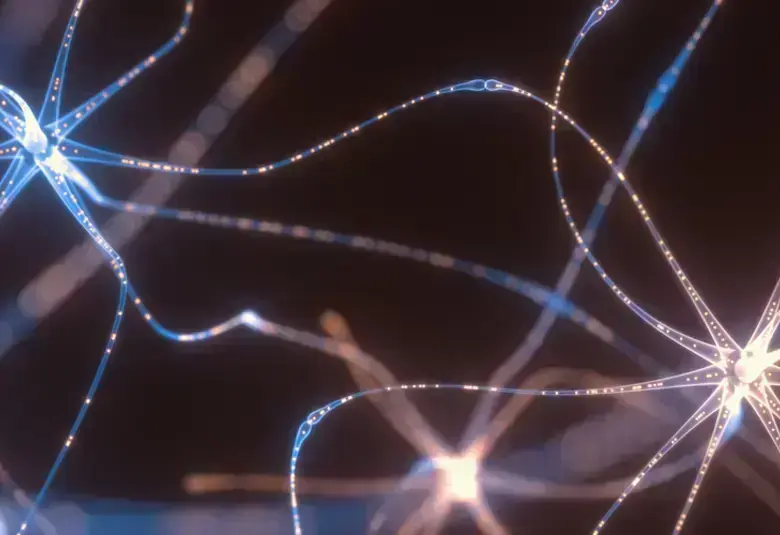The COVID-19 pandemic represents a ‘triple threat’, impacting not only the physical health of citizens worldwide, but also their economic status, and mental health and wellbeing.
코로나19 대유행은 전 세계 인구의 신체 건강 뿐만 아니라 경제적 상태, 그리고 정신 건강 및 웰빙에까지 영향을 미치는 '3중 위험'을 초래하고 있습니다.
The prevalence of major depressive disorder and depressive symptoms has increased worldwide over the past year,1,2 triggering what some are referring to as a mental health tsunami.3 Beyond exacerbating symptoms in patients with pre-existing mental health conditions, the pandemic has increased the prevalence of new cases of major depressive disorder and depressive symptoms in the general population, and in COVID-19 survivors.1,4,5
주요 우울 장애와 우울 증상의 발병률이 지난 한 해 동안 전 세계적으로 증가함에 따라1,2, 일각에서는 '정신 건강적 쓰나미'라고도 표현하는 현상이 발생하고 있습니다.3 코로나19 대유행으로 인해 기존 정신 질환자들이 증상 악화를 겪는 한편, 일반 사람들이나 코로나 생존자들이 주요 우울 장애 및 우울 증상을 겪는 신규 사례가 증가하고 있습니다.1,4,5
Experience from past viral outbreaks, including severe acute respiratory syndrome and Middle East respiratory syndrome, indicate that the psychopathological consequences of COVID-19 will likely be long lasting and require careful monitoring.6–8
중증 급성 호흡기 증후군(SARS), 중동 호흡기 증후군(MERS) 등 과거에 발생했던 바이러스성 질병에 대한 경험에 비추어 볼 때, 코로나19의 정신병리학적 여파는 장기간 유지될 가능성이 높아 신중한 관찰이 필요합니다.6-8
Effect of COVID-19 on patients with MDD
코로나19가 주요 우울 장애 환자에게 미치는 영향
The COVID-19 pandemic can be considered a global traumatic event from a mental health perspective, owing to its psychological burden and associated stressors, including the unpredictable nature of the disease, economic uncertainty, lockdown measures, and social isolation.1,9,10 A ~three-fold higher prevalence of depressive symptoms/major depressive disorder (MDD) has been observed compared to before the COVID-19 pandemic.1,5
코로나19 대유행은 심리적 부담과 관련 스트레스 요인(질병의 예측 불가능성, 경제적 불안, 봉쇄 조치, 사회적 거리 두기 등)을 초래하기 때문에 정신 건강적 측면에서 전 세계적인 정신적 외상성 사건이라고 볼 수 있습니다.1,9,10 우울 증상 및 주요 우울 장애의 유병률은 코로나19 대유행 전에 비해 약 세 배나 높은 것으로 나타났습니다.1,5
The COVID-19 pandemic constitutes a traumatic event
코로나19 대유행은 정신적 외상성 사건입니다
Psychiatric patients, including those with MDD, are particularly vulnerable to the impact of the COVID-19 pandemic for a number of reasons.11
주요 우울 장애 환자를 비롯한 정신 질환자가 코로나19 대유행의 여파에 유난히 취약한 이유에는 여러 가지가 있습니다.11
Firstly, they may experience relapses in their mental health condition triggered by factors such as social isolation, fear of infection, and economic uncertainty.12,13 Many patients have also struggled with the disruption to their daily routine and grieve their pre-pandemic lives. They may also be at a heightened risk of contracting the virus itself, due to behavioural and socioeconomic factors, as well as elevated levels of inflammation.14
우선, 정신 질환자는 사회적 거리 두기, 감염에 대한 두려움, 경제적 불안 등으로 인해 정신 건강 문제가 재발할 수 있습니다.12,13 바뀐 일상에서 고전하며 대유행 전의 삶을 그리워하는 환자들이 많습니다. 또한, 정신 질환자는 행동 및 사회경제적 요인에 의해 바이러스 감염 위험과 염증 수치가 더 높습니다.14
Reduced access to mental health services has posed an additional challenge for psychiatric patients,15 with many clinicians feeling that the impact of the pandemic on patient care has been largely negative. Telemedicine has, however, provided some benefits in psychiatry, including increased privacy and fewer missed appointments.16
정신 건강 치료를 제대로 받지 못하게 되면서 정신 질환자가 직면하는 문제는 더 늘어나고,15 많은 의료 전문가들은 대유행이 환자 치료에 부정적 영향을 미친다고 보고 있습니다. 그러나 정신의학계는 원격 의료를 통해 사생활 보호나 진료 취소율 감소 등의 이점을 누리고 있기도 합니다.16
Patients with MDD face additional challenges during the COVID-19 pandemic
코로나19 대유행에 따라 주요 우울 장애 환자는 더 많은 문제를 겪습니다
Impact and possible mechanisms of long COVID
만성 코로나의 영향과 예상 메커니즘
‘Long COVID’, or ‘post-COVID-19 syndrome’ has been observed in a subset of the population and is defined by the UK National Institute for Health and Care Excellence (NICE) as “signs and symptoms that develop during or after an infection consistent with COVID-19, continue for more than 12 weeks and are not explained by an alternative diagnosis.”17
일부 인구 집단에서는 '만성 코로나' 또는 '코로나19 사후 증상'이 관찰되고 있으며, 이를 두고 영국 국립보건임상연구원(NICE)은 "코로나19 감염 중 또는 이후에 발생하여 12주 이상 유지되지만 대안 진단으로 설명할 수 없는 징후 및 증상"이라고 정의합니다.17
The clinical features of long COVID include chronic cognitive deficits, depression, sleep difficulties, persistent fatigue, and anhedonia.17,18 Survivors have described a feeling of ‘brain fog’, which may encompass all, or a combination of these features.19 Cognitive dysfunction resulting from long COVID will likely have a significant impact on survivors’ ability to return to everyday functioning.20 Parallels have therefore been made between long COVID and MDD, given the overlap in core symptomology and physical, emotional, and cognitive burdens.
만성 코로나의 임상적 특성으로는 만성 인지 기능 저하, 우울증, 수면 장애, 만성 피로, 무쾌감증 등이 있습니다.17,18 코로나 생존자들은 이러한 증상 모두 또는 몇 가지를 아우르는, 뇌에 안개가 낀 것 같은 느낌을 의미하는 '브레인 포그(brain fog)'를 경험합니다.19 만성 코로나에 따른 인지 장애는 코로나 완치자의 일상 기능 회복 능력에 상당한 영향을 미칠 수 있습니다.20 이에 따라 만성 코로나와 주요 우울 장애 간에는 주요 증상과 신체적, 감정적, 인지적 문제가 중복되는 유사성이 형성됩니다.
Parallels observed between long COVID and symptoms of MDD
만성 코로나와 주요 우울 장애 증상 간의 유사성이 관찰되고 있습니다
It is hypothesised that the symptoms of long COVID may be driven by an elevated immune response. Both COVID-19 and depression have been associated with high plasma levels of inflammatory mediators,21–23 and the therapeutic efficacy of antidepressants in MDD may be partly attributed to their anti-inflammatory properties.24 An observational study of patients hospitalised for COVID-19 suggested a lower risk of intubation or death in those treated with antidepressants compared to those without.25
만성 코로나 증상이 면역 반응 증가에 따른 결과라는 가설이 있습니다. 코로나19와 우울증은 모두 염증 매개체의 높은 플라스마 수치와 관련이 있으며,21-23 주요 우울 장애 치료 시 사용하는 항우울제의 효능은 해당 약제의 소염 효과에 기인하기도 합니다.24 코로나19에 감염된 격리 환자들을 관찰한 한 연구에 따르면, 항우울제를 사용한 환자가 사용하지 않은 환자에 비해 삽관 필요성이나 사망 위험이 낮았습니다.25
Mental health and MDD in the COVID-19 era and beyond
코로나19 시국 및 그 이후의 정신 건강과 주요 우울 장애
More resilient individuals, for example those with more established support networks or with a stronger sense of spirituality, are less likely to experience symptoms of depression or anxiety as a result of the pandemic.26 The 2021 World Happiness Report, published by the United Nations Sustainable Development Solutions Network, revealed commonalities such as social connectedness and daily physical activity between the happiest groups.27
주변에 견고한 네트워크가 제대로 확립되어 있거나 정신적으로 강인하여 회복력이 좋은 사람들은 코로나 대유행으로 인해 우울증이나 불안증을 겪을 가능성이 낮습니다.26 UN 지속가능발전 해법 네트워크가 발표한 2021년 세계 행복 보고서(World Happiness Report)에 따르면, 행복 지수가 높은 집단은 공통적으로 사회적 관계 유지와 일상적 신체 활동 등의 특성을 보였습니다.27
Overall, the COVID-19 pandemic has created a substantial burden on global mental health.1,2,5 Anhedonia has been shown to be a predictor of severe depression during the pandemic, and patients with MDD have experienced exacerbations in symptoms such as fatigue and poor sleep.28–30 Reports of these symptoms, in addition to cognitive impairment, have also been elevated in COVID-19 survivors.4,18,31–33 In order to best support patients with MDD, a treatment option should therefore be considered that both ameliorates the symptoms of MDD and promotes subsequent functional recovery.34
종합적으로 볼 때 코로나19 대유행은 전 세계 인구의 정신 건강에 대대적인 부담을 안겨주었습니다.1,2,5 대유행 기간 동안 무쾌감증은 중증 우울증의 예측 인자 역할을 했으며, 주요 우울 장애 환자들은 피로와 수면 장애와 같은 증상이 악화되었습니다.28-30 이러한 증상과 인지 장애를 호소하는 코로나19 생존자도 증가했습니다.4,18,31-33 주요 우울 장애 환자를 최대한 지원하려면 주요 우울 장애 증상을 완화할 뿐만 아니라 기능 회복까지 촉진할 수 있는 치료 방식을 고려해야 합니다.34
This article was developed in follow-up to a promotional webinar discussing COVID-19 and vortioxetine (Brintellix®).
이 기사는 코로나19 및 보티옥세틴(Brintellix®)에 관한 홍보 목적 온라인 세미나의 후속 취재로 작성되었습니다.
Educational and financial support provided by Lundbeck.
룬드벡(Lundbeck)의 교육 및 재정 지원으로 진행되었습니다.
Our correspondent’s highlights from the symposium are meant as a fair representation of the scientific content presented. The views and opinions expressed on this page do not necessarily reflect those of Lundbeck.




